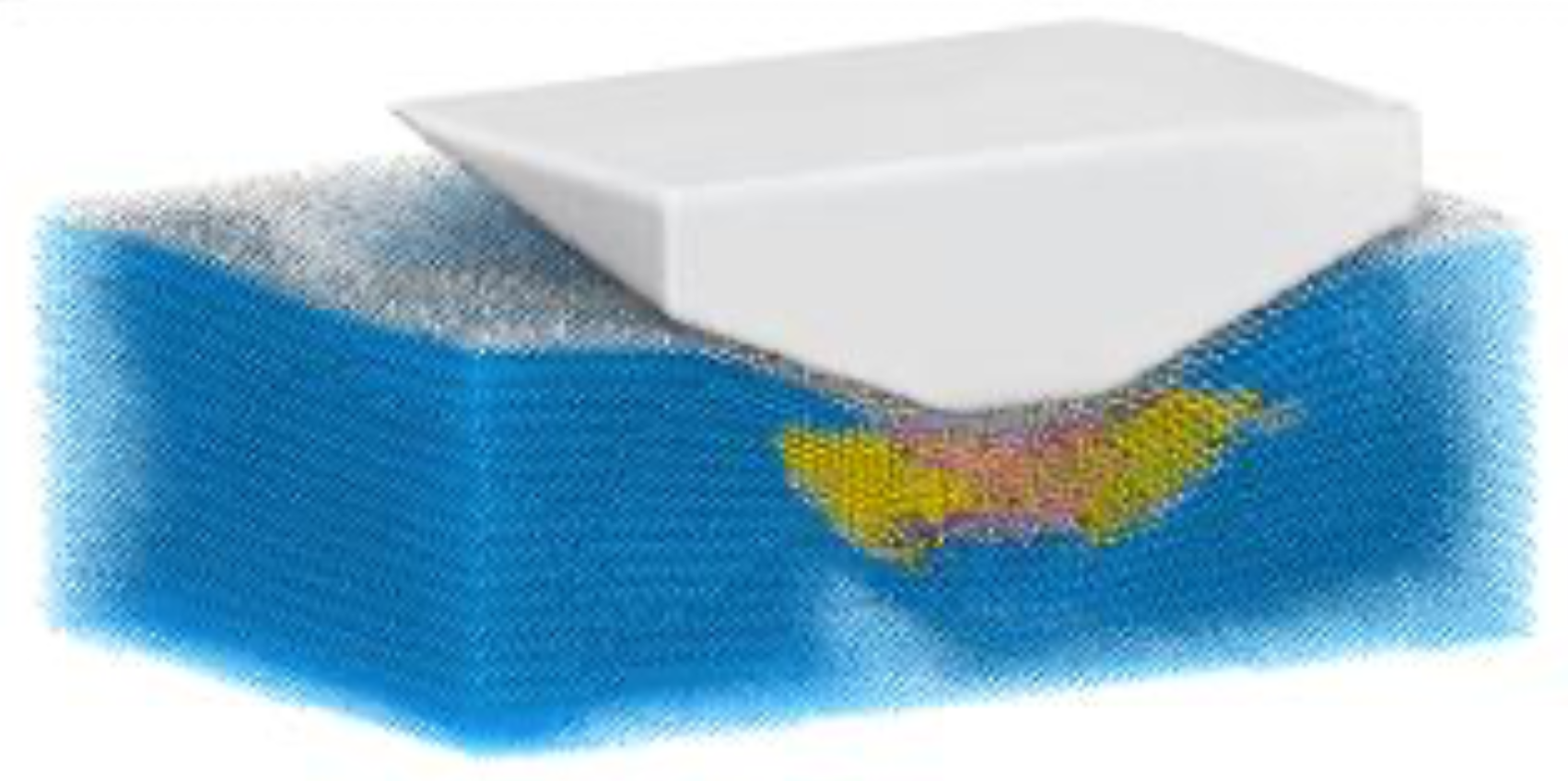
Silicon (Si) and Germanium (Ge) exhibit multiple metastable phases that hold promise for advancing optoelectronic integration into Si-based technologies. Specifically, the hexagonal diamond (hd) phase of Ge possesses a direct band gap [1], making it highly desirable. These metastable phases can be synthesized from the stable diamond cubic (dc) phase through a series of pressure-induced phase transitions, as observed experimentally via nanoindentation. Leveraging machine learning (ML) interatomic potentials, we conducted extensive Molecular Dynamics (MD) simulations of the nanoindentation process [2] to capture the atomistic mechanisms underlying these pressure-induced transitions. We developed a Ge-specific ML potential [3], revealing key nucleation events and the interplay between localized nucleation kinetics and complete phase transitions under pressure. This study extends another similar study on Si, where existing ML potentials have uncovered complex phase transformation pathways [4]. To integrate these findings, we examined how extended defects such as dislocations and stacking faults, often formed during pressure-induced phase transformation or epitaxial growth of Ge on Si, influence its electronic properties. Ab initio calculations show that dislocations introduce electronic trap states in the band gap, while stacking faults may lead to hexagonal inclusions that form Type-I quantum wells with a tunable direct band gap. These inclusions are predicted to induce a direct gap [5] consistent with recent experimental photoluminescence observations. Our comprehensive approach, combining pressure-dependent phase transition analysis with electronic defect characterization, provides new insights into engineering the optoelectronic properties of group-IV semiconductors and suggests novel avenues for utilizing structural and electronic modifications of SiGe for future quantum and photonic technologies.
[1] E. Fadaly, et al. Nature 580, 205–209 (2020)
[2] G. Ge, F. Rovaris et al. Acta Materialia 263, 119465 (2024)
[3] A. Fantasia et al. JCP 161, 014110 (2024)
[4] F. Rovaris et al. arXiv:2408.12358
[5] A. Marzegalli et al., Nanoscale Horiz.,(2024) Advance Article

